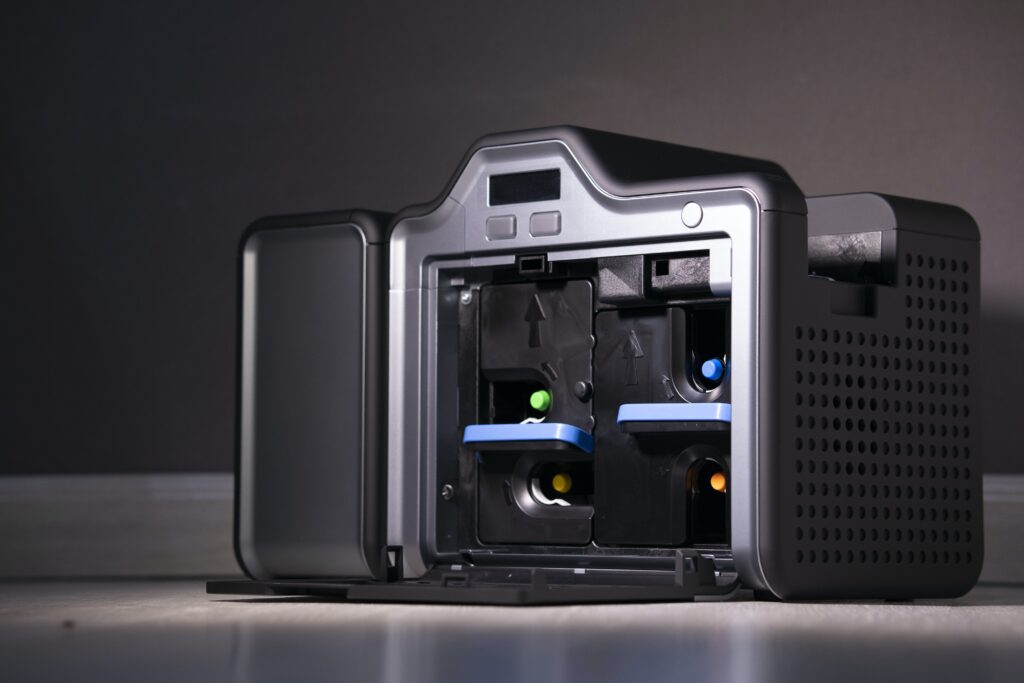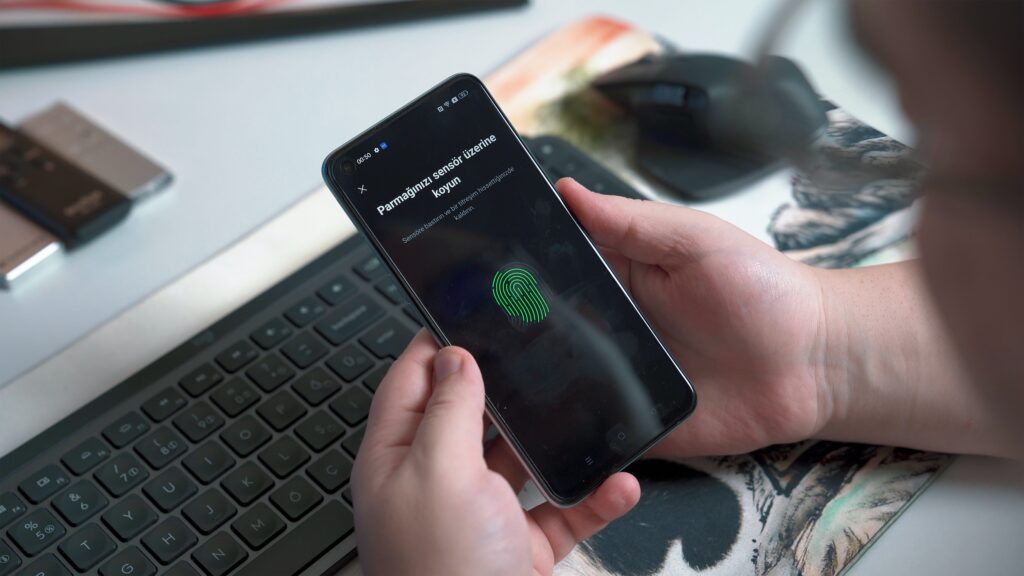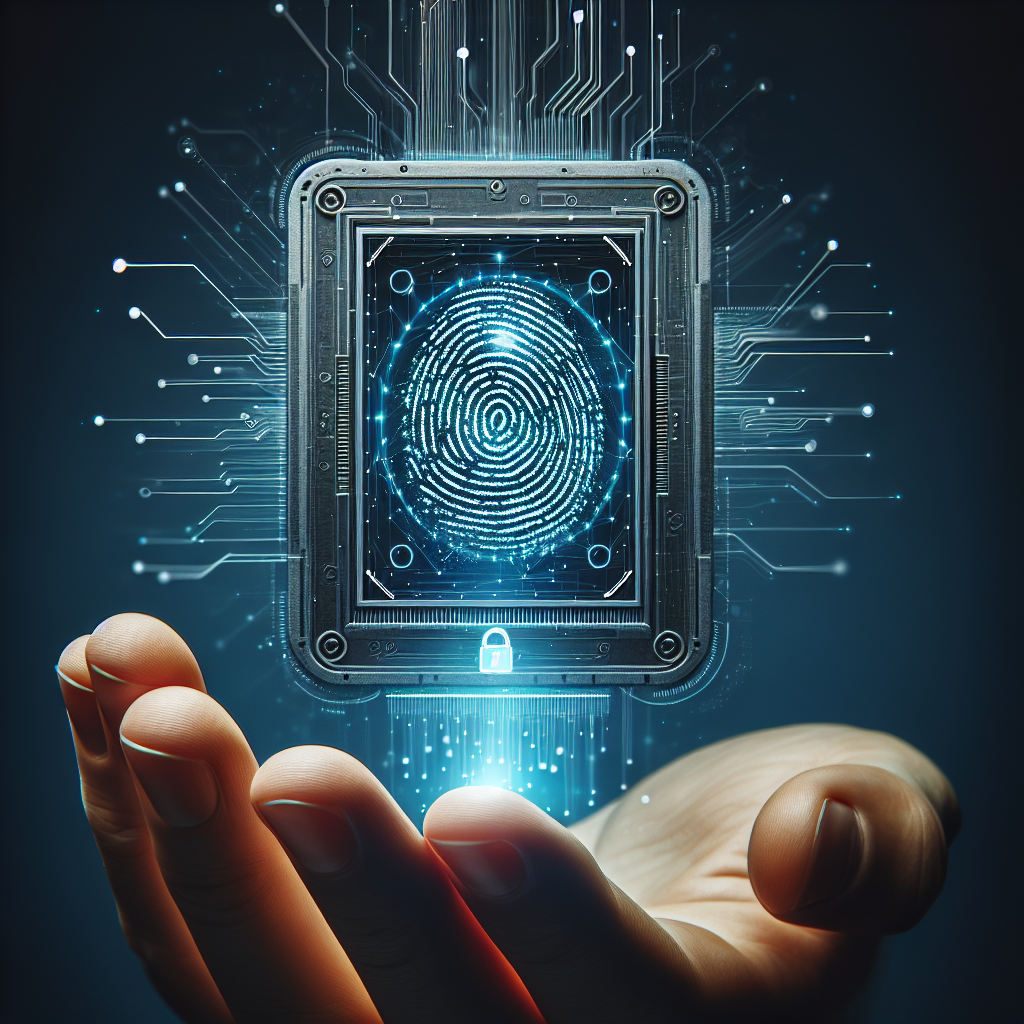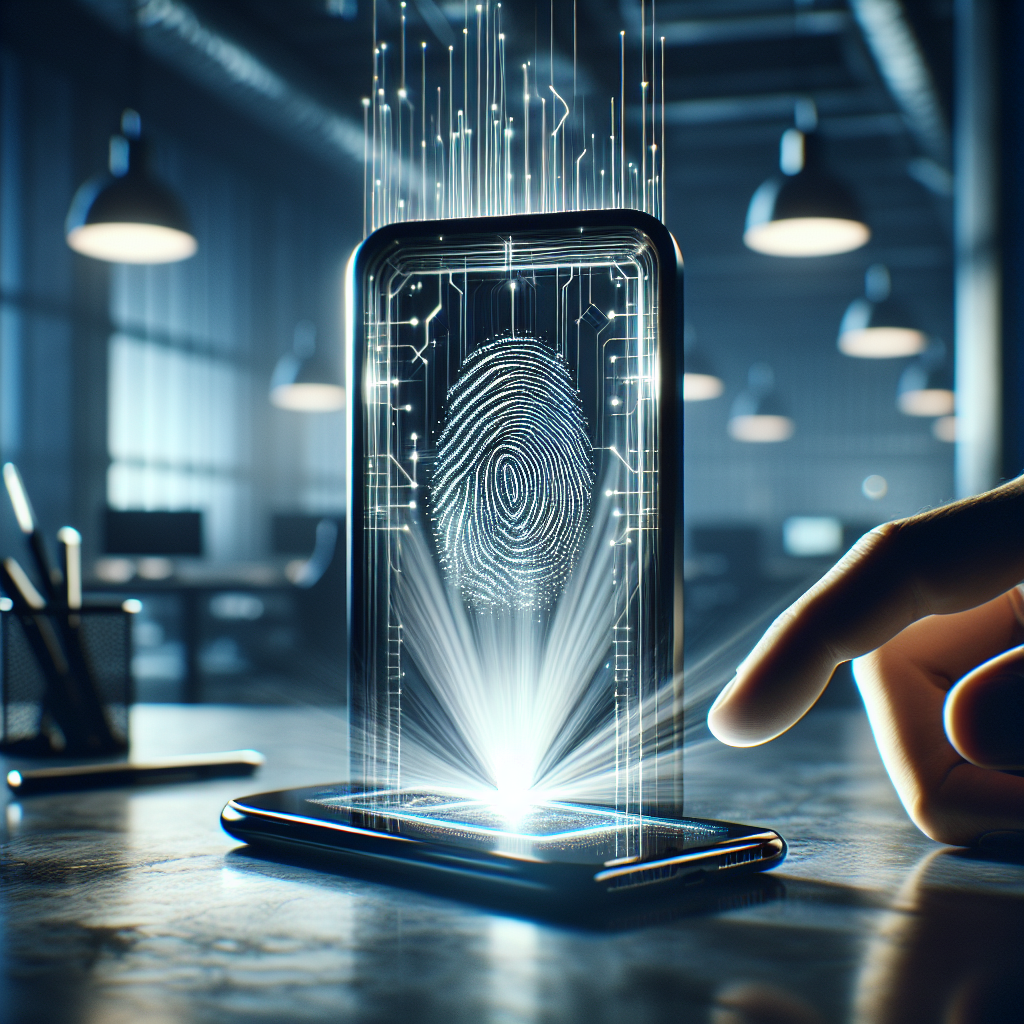In today’s digital age, ensuring the security of our personal information has become increasingly important. That’s where biometric authentication comes into play. This comprehensive guide provides an all-encompassing overview of biometric authentication, a revolutionary technology that verifies your identity based on unique physical or behavioral traits. From fingerprints and facial recognition to voice and iris scans, this article explores the various biometric modalities, their applications, and the benefits they bring in safeguarding our digital lives. So, get ready to discover the fascinating world of biometric authentication and how it is revolutionizing the way we protect our sensitive data.

What is Biometric Authentication
Biometric authentication is a security method that uses unique physical or behavioral characteristics to verify the identity of an individual. It provides a more secure and convenient alternative to traditional password-based authentication systems. By relying on biometric data, such as fingerprints, iris patterns, and facial features, biometric authentication offers a higher level of accuracy in identifying individuals.
Definition of Biometric Authentication
Biometric authentication, also known as biometrics, refers to the process of verifying a person’s identity based on their physiological or behavioral traits. Instead of using passwords or PINs, biometrics relies on unique characteristics that are specific to an individual. This can include fingerprints, iris patterns, voice prints, hand geometry, and even DNA. Biometric authentication systems capture and analyze these traits, comparing them to previously stored data to authenticate the user’s identity.

Types of Biometric Authentication
There are several types of biometric authentication modalities, each based on different physiological or behavioral traits. Some of the most common types include:
Fingerprint Recognition
Fingerprint recognition is one of the oldest and most widely used biometric modalities. It works by capturing the unique patterns formed by the ridges and valleys on an individual’s fingertips. Fingerprint recognition systems can accurately authenticate an individual’s identity by comparing their fingerprint with previously stored templates.
Iris Recognition
Iris recognition involves the scanning of the unique patterns in the iris of an individual’s eye. The iris, which is the colored part of the eye, contains complex and distinctive patterns that remain stable throughout a person’s life. Iris recognition systems use advanced imaging techniques to capture and analyze these patterns, providing a highly accurate and secure form of biometric authentication.
Facial Recognition
Facial recognition technology analyzes the geometric features of an individual’s face, such as the distance between the eyes, the shape of the nose, and the contours of the face. By comparing these features with a stored template, facial recognition systems can accurately verify an individual’s identity. Facial recognition is widely used in various applications, including smartphone unlocking and surveillance systems.
Voice Recognition
Voice recognition technology analyzes an individual’s unique vocal characteristics, such as pitch, tone, and pronunciation. By creating a voiceprint, which is a mathematical representation of an individual’s voice, voice recognition systems can authenticate a person’s identity by comparing their voice with a stored template. Voice recognition is commonly used in telephone banking systems and voice assistants.
Hand Geometry Recognition
Hand geometry recognition is based on the physical dimensions and characteristics of an individual’s hand. It involves measuring parameters such as finger length, width, and curvature, as well as the overall shape of the hand. Hand geometry recognition systems can authenticate a person’s identity by comparing these measurements with previously stored data.
Retina Recognition
Retina recognition technology scans the unique patterns of blood vessels in the back of an individual’s eye. These patterns are highly complex and remain stable throughout a person’s life. Retina recognition systems use specialized cameras to capture and analyze these patterns, providing a highly accurate and secure form of biometric authentication.
Signature Recognition
Signature recognition involves analyzing an individual’s unique handwriting characteristics. It captures various parameters, such as stroke pressure, pen speed, and signature shape, to create a signature profile. Signature recognition systems can verify a person’s identity by comparing their signature with a stored template.
DNA Recognition
DNA recognition is a highly advanced form of biometric authentication that analyzes an individual’s unique DNA sequence. It is primarily used in forensic applications and is not yet widely available for everyday authentication purposes. DNA recognition provides an extremely accurate form of authentication, as DNA is unique to each individual.
Advantages and Disadvantages of Biometric Authentication
Biometric authentication offers several advantages over traditional password-based authentication methods. Some of the key advantages include:
Advantages of Biometric Authentication
- Enhanced security: Biometric authentication provides a higher level of security compared to traditional passwords, as biometric traits are unique to each individual and difficult to replicate.
- Convenience: Biometric authentication eliminates the need to remember and manage multiple passwords, making it more convenient for users.
- Speed and efficiency: Biometric authentication is fast and efficient, allowing for quick and seamless user authentication.
- Non-transferable: Biometric traits cannot be easily shared or stolen, reducing the risk of unauthorized access.
- Scalability: Biometric authentication can be easily scaled to accommodate large user bases without compromising security.
However, there are also some disadvantages and concerns associated with biometric authentication. These include:
Disadvantages of Biometric Authentication
- Privacy concerns: Biometric data is highly personal and raises concerns about privacy and data protection.
- Accuracy limitations: Biometric systems may sometimes produce false positives or false negatives, leading to authentication errors.
- Cost: Implementing biometric authentication systems can be expensive, requiring specialized hardware and software.
- Resistance to change: Some individuals may be resistant to adopting biometric authentication, preferring traditional methods that they are familiar with.
Despite these challenges, biometric authentication continues to gain popularity and is being increasingly adopted in various industries and applications.

How Biometric Authentication Works
Biometric authentication involves a series of steps that capture, process, compare, and store biometric data. Understanding the process is crucial in evaluating the effectiveness of biometric systems and addressing any concerns. The process can be divided into four main stages: capture, processing, comparison, and storage.
Capture of Biometric Data
The first step in biometric authentication is the capture of biometric data. This involves the use of sensors or devices to collect the unique physical or behavioral traits of an individual. For example, fingerprints can be captured using fingerprint scanners, while facial recognition systems use cameras to capture facial features. The captured data is then converted into a digital format that can be processed and analyzed.
Processing of Biometric Data
Once the biometric data is captured, it undergoes processing to extract the specific features that are unique to each individual. This process involves using algorithms and mathematical models to analyze the data, identify key characteristics, and convert them into a standardized format. For example, facial recognition systems may extract landmarks on the face or create a numerical representation of facial features.
Comparison and Authentication
After the biometric data is processed, it is compared to previously stored templates or reference data. These templates contain the biometric information of authorized individuals. The comparison process involves matching the extracted features from the captured data with the stored templates to determine whether there is a match or not. If the features match within an acceptable threshold, the individual is considered authenticated.
Storage and Management of Biometric Data
The final step in the biometric authentication process is the storage and management of the biometric data. It is crucial to ensure the secure storage and handling of biometric information to prevent unauthorized access or misuse. Biometric data is typically stored in encrypted databases or secure servers, with access restricted to authorized personnel. Strict privacy and data protection measures must be in place to comply with legal and regulatory requirements.
Common Biometric Modalities
There are several common biometric modalities that are widely used in biometric authentication systems. Each modality offers unique advantages and may be more suitable for specific applications. Understanding the different modalities can help in choosing the most appropriate form of biometric authentication for a particular use case.
Fingerprint Recognition
Fingerprint recognition is one of the oldest and most commonly used biometric modalities. It relies on capturing and analyzing the unique patterns formed by the ridges and valleys on an individual’s fingertips. Fingerprint recognition is widely adopted in various applications, from unlocking smartphones to access control systems. It offers a high level of accuracy and is relatively cost-effective to implement.
Iris Recognition
Iris recognition involves scanning the unique patterns in the iris of an individual’s eye. The iris, which is the colored part of the eye, contains intricate and distinctive patterns that remain stable throughout a person’s life. Iris recognition systems use advanced imaging techniques to capture and analyze these patterns, offering a highly accurate and secure form of biometric authentication. Iris recognition is commonly used in high-security applications, such as airport border control.
Facial Recognition
Facial recognition technology analyzes the geometric features of an individual’s face to verify their identity. It captures various facial parameters, such as the distance between the eyes, the shape of the nose, and the contours of the face. Facial recognition systems can accurately identify individuals even in real-time scenarios, making it suitable for surveillance systems and access control. However, it may have limitations in low light conditions or when the face is partially obstructed.
Voice Recognition
Voice recognition technology verifies an individual’s identity based on their unique vocal characteristics, such as pitch, tone, and pronunciation. It creates a voiceprint, a mathematical representation of an individual’s voice, which can be compared to stored templates for authentication. Voice recognition is commonly used in telephone banking systems, voice assistants, and call center authentication. It offers the advantage of being accessible and user-friendly.
Hand Geometry Recognition
Hand geometry recognition involves measuring the physical dimensions and characteristics of an individual’s hand. This includes parameters such as finger length, width, and curvature, as well as the overall shape of the hand. Hand geometry recognition systems are easy to use, non-intrusive, and relatively cost-effective. They are commonly used in access control systems and time and attendance tracking.
Retina Recognition
Retina recognition scans the unique patterns of blood vessels in the back of an individual’s eye. These patterns are highly complex and remain stable throughout a person’s life. Retina recognition systems use specialized cameras to capture and analyze these patterns, providing a highly accurate form of biometric authentication. However, retina recognition requires close proximity and can be time-consuming, limiting its widespread adoption.
Signature Recognition
Signature recognition analyzes the unique handwriting characteristics of an individual. It captures parameters such as stroke pressure, pen speed, and signature shape to create a signature profile. Signature recognition systems can verify an individual’s identity by comparing their signature with a stored template. It is commonly used in document authentication and check verification systems.
DNA Recognition
DNA recognition is a highly advanced form of biometric authentication that analyzes an individual’s unique DNA sequence. It is primarily used in forensic applications for criminal identification or paternity testing. DNA recognition provides an extremely accurate form of authentication, as DNA is unique to each individual. However, it is currently not widely used for everyday authentication due to its complexity and invasive nature.

Pros and Cons of Biometric Modalities
Each biometric modality has its own strengths and weaknesses. Understanding the pros and cons of each modality is crucial in selecting the most appropriate form of biometric authentication for a particular application.
Fingerprint Recognition
Pros:
- Widely available and cost-effective to implement.
- Provides a high level of accuracy and is less susceptible to false positives and false negatives.
- Easy to use and accepted by users due to its familiarity.
Cons:
- Requires physical contact with the scanning device, which may raise concerns in terms of hygiene.
- May pose challenges for individuals with certain medical conditions or professions that may affect their fingerprints.
Iris Recognition
Pros:
- Offers a highly accurate and secure form of biometric authentication.
- Non-contact modality, which makes it more hygienic.
- Stable and reliable biometric trait that remains unchanged throughout a person’s life.
Cons:
- Requires specialized cameras or devices, which may increase the cost of implementation.
- Requires close proximity and proper alignment for accurate scanning, which may be challenging in certain scenarios.
Facial Recognition
Pros:
- Non-intrusive and non-contact modality, making it user-friendly and hygienic.
- Can work in real-time scenarios, allowing for identification of individuals in crowds or surveillance applications.
- Increasingly accurate and reliable due to advancements in algorithms and technologies.
Cons:
- May have limitations in low light conditions or when the face is partially obstructed.
- Potential for false positives or negatives, especially with individuals who have similar facial features.
Voice Recognition
Pros:
- User-friendly and accessible, as it only requires the individual’s voice.
- Can be used remotely and does not require physical contact.
- Difficult to forge or mimic, as it relies on unique vocal characteristics.
Cons:
- May be affected by environmental factors, such as background noise or changes in voice due to illness.
- Requires specialized algorithms and voice databases for accurate and reliable authentication.
Hand Geometry Recognition
Pros:
- Non-intrusive and non-contact modality, suitable for applications that prioritize hygiene.
- Easy to use and requires minimal training for users.
- Relatively cost-effective to implement.
Cons:
- May have limitations for individuals with certain hand deformities or conditions.
- Requires proper placement and alignment for accurate measurement, which may pose challenges in certain scenarios.
Retina Recognition
Pros:
- Highly accurate and secure form of biometric authentication.
- Unique and stable trait that remains unchanged throughout a person’s life.
- Difficult to forge or replicate, as the retinal blood vessels are internal and not readily accessible.
Cons:
- Requires close proximity and may be perceived as invasive by some individuals.
- Not suitable for large-scale deployments due to time-consuming scanning process and specialized equipment requirements.
Signature Recognition
Pros:
- Enabling authentication based on an individual’s unique handwriting characteristics.
- Non-intrusive and does not require specialized hardware.
- Can be easily integrated into existing document verification processes.
Cons:
- Signature recognition may be affected by variations in writing styles or the condition of the writing surface.
- May require additional training or calibration to achieve optimal accuracy and reliability.
DNA Recognition
Pros:
- Provides an extremely accurate form of biometric authentication due to the uniqueness of DNA.
- Can be used for forensic applications, such as criminal identification or paternity testing.
- Difficult to forge or replicate, as DNA is specific to each individual.
Cons:
- Highly invasive and may not be suitable for everyday authentication purposes.
- Requires specialized equipment and expertise for accurate analysis, making it costly and time-consuming.
It is important to consider the specific requirements, constraints, and user preferences when choosing a biometric modality for authentication purposes. The implementation should align with the desired level of security, convenience, and cost-effectiveness.
Applications of Biometric Authentication
Biometric authentication has a wide range of applications across various industries. Its ability to consistently and accurately verify an individual’s identity makes it invaluable in scenarios where security, convenience, and efficiency are paramount. Some of the key applications of biometric authentication include:
Physical Access Control
Biometric authentication is commonly used for controlling access to physical spaces, such as buildings, offices, and restricted areas. By using biometric modalities like fingerprint recognition, iris recognition, or facial recognition, organizations can ensure that only authorized individuals are granted access. Biometric access control systems are often employed in high-security environments, such as government facilities, airports, and data centers.
Digital Access Control
Biometric authentication is also used to secure digital assets and control access to computer systems, networks, and online platforms. This is particularly important in sectors such as banking, finance, and e-commerce, where protecting customer data and preventing unauthorized access is critical. Digital access control systems leverage biometric modalities like fingerprint recognition, iris recognition, or voice recognition to ensure secure authentication and prevent unauthorized use of digital resources.
Identification and Verification
Biometric authentication is widely used for personal identification and verification purposes. This includes applications such as passport control at airports, border crossings, or immigration check-points. By using biometric modalities like facial recognition or fingerprint recognition, authorities can quickly and accurately verify an individual’s identity against their biometric data stored in centralized databases or travel documents.
Time and Attendance Tracking
Many organizations use biometric authentication for employee time and attendance tracking. By using biometric modalities like fingerprint recognition or hand geometry recognition, employers can ensure accurate attendance records and prevent time theft or buddy punching. Biometric time and attendance systems provide a secure and efficient way to record employee hours, streamline payroll processes, and comply with labor regulations.
Banking and Financial Services
Biometric authentication is increasingly being adopted in the banking and financial services industry to enhance security and improve customer experience. Biometric modalities like fingerprint recognition or facial recognition are used to authenticate customers during account access, transaction authorization, or mobile banking applications. Biometrics can help prevent identity theft, fraudulent activities, and provide a seamless and convenient user experience.
Border Security and Immigration
Biometric authentication plays a critical role in enhancing border security and immigration control. Many countries have implemented biometric systems at border crossings and immigration checkpoints to verify the identity of travelers. Biometric modalities like facial recognition or iris recognition are used to compare an individual’s biometric traits with their travel documents, ensuring the authenticity of their identity and preventing illegal border crossings.
Healthcare and Medical Records
The healthcare industry has also embraced biometric authentication to secure patient records, prevent medical identity theft, and ensure accurate patient identification. Biometric modalities like fingerprint recognition or palm vein recognition can be used to verify the identity of patients during hospital admissions, medication dispensing, or access to electronic health records. Biometrics can enhance patient safety, streamline administrative processes, and improve overall healthcare outcomes.
Law Enforcement and Criminal Identification
Biometric authentication is widely used in law enforcement for criminal identification and investigation. Biometric modalities like fingerprint recognition, facial recognition, or DNA recognition are crucial in matching crime scene evidence with databases of known offenders. Biometrics enable accurate and reliable identification, helping law enforcement agencies solve crimes, apprehend criminals, and prevent future criminal activities.
Biometric authentication continues to find new applications and use cases as technology advances and security requirements evolve. Its ability to provide seamless and accurate identification is revolutionizing various industries and enhancing the overall user experience.

Challenges and Concerns of Biometric Authentication
While biometric authentication offers many benefits, there are also several challenges and concerns that need to be addressed. Understanding these challenges is crucial in designing and implementing effective biometric authentication systems. Some of the key challenges and concerns include:
Privacy and Data Protection
One of the main concerns with biometric authentication is the privacy and protection of biometric data. Biometric traits are inherently personal and unique to each individual, raising concerns about how this data is collected, stored, and used. Organizations implementing biometric systems must have robust privacy policies and security measures in place to ensure the confidentiality and integrity of biometric data. Compliance with privacy laws and regulations is essential to build trust and address privacy concerns.
Accuracy and Reliability
Biometric systems are not infallible and may occasionally produce false positives or false negatives. False positives occur when an unauthorized individual is mistakenly identified as an authorized user, while false negatives occur when an authorized user is incorrectly rejected. Achieving a balance between security and user convenience is crucial in designing biometric systems. Continuous monitoring, optimization, and regular system updates are necessary to improve accuracy and reliability.
Cost and Implementation
Implementing biometric authentication systems can be costly, particularly when considering hardware, software, and infrastructure requirements. Organizations need to invest in specialized sensors, cameras, or scanners that are capable of capturing high-quality biometric data. Additionally, there may be costs associated with integrating biometric systems with existing infrastructure and conducting training for users. The return on investment should be carefully evaluated to justify the implementation of biometric authentication.
Acceptance and User Experience
The acceptance and user experience of biometric authentication systems can be influenced by various factors. Some individuals may be reluctant to adopt biometrics due to concerns about privacy or perceived invasiveness. User experience can be affected by the speed and ease of the authentication process, as well as the reliability and convenience of the biometric modality being used. Educating users about the benefits and security of biometric authentication and addressing any concerns they may have is crucial for successful implementation.
Security Vulnerabilities
Although biometric authentication is generally considered more secure than traditional password-based systems, it is not immune to security vulnerabilities. Biometric data can be subject to theft, spoofing, or replay attacks if proper security measures are not in place. Organizations must implement encryption, secure storage, and robust authentication protocols to protect biometric data from unauthorized access. Regular security audits and assessments are also necessary to identify and address any security vulnerabilities.
Environmental Considerations
Certain environmental factors can impact the performance and accuracy of biometric authentication systems. For example, variations in lighting conditions may affect the quality of captured images or scans, potentially leading to authentication errors. Environmental noise can also affect voice recognition systems. Biometric systems should be designed to account for these environmental factors and provide reliable performance across various scenarios.
Legal and Ethical Implications
Biometric authentication raises legal and ethical considerations, particularly in relation to privacy, informed consent, and regulatory compliance. Organizations must adhere to applicable laws and regulations governing the collection, storage, and use of biometric data. Clear policies and procedures should be established to address legal and ethical concerns, ensuring transparency and accountability in the use of biometric authentication.
Addressing these challenges and concerns is crucial in ensuring the successful implementation and acceptance of biometric authentication systems. Organizations must adopt a holistic approach, considering technical, legal, ethical, and user-centric aspects to build secure, reliable, and user-friendly biometric authentication solutions.
Best Practices for Implementing Biometric Authentication
Implementing biometric authentication requires careful planning and consideration of various factors to ensure its effectiveness and secure operation. Following best practices can help organizations optimize the implementation process and address potential challenges. Some key best practices include:
Ensure User Consent and Privacy
Obtaining user consent and maintaining privacy are critical when implementing biometric authentication. Organizations should clearly communicate to users how their biometric data will be collected, stored, and used. Privacy policies should be transparent, and users should have the option to opt-out of biometric authentication if desired. Compliance with relevant privacy laws and regulations, such as GDPR, is essential to protect user rights and build trust.
Choose Reliable and Secure Biometric Modalities
Selecting the most reliable and secure biometric modality is crucial for the success of the authentication system. Consider factors such as accuracy, robustness, user acceptance, and the specific requirements of the application. Conduct thorough research, evaluate different modalities, and choose a technology that meets the desired level of security and user experience. Ensure that the chosen modality is resistant to spoofing attacks and has a low false acceptance rate.
Perform Regular Maintenance and Updates
Biometric systems require regular maintenance and updates to ensure optimal performance. Regularly test and calibrate devices to maintain accuracy and reliability. Install software updates promptly to address security vulnerabilities or performance enhancements. Conduct periodic audits and assessments to identify and address any issues or weaknesses. Implementing a sound maintenance and update strategy is essential to keep the biometric authentication system running smoothly.
Implement Multi-Factor Authentication
Biometric authentication should not be relied upon as the sole method of authentication. Implementing multi-factor authentication (MFA) adds an extra layer of security, reducing the risk of unauthorized access. Combining biometric authentication with other factors, such as passwords or smart cards, provides an additional level of protection against identity theft or spoofing attacks. Choose a combination of factors that align with the desired level of security and user convenience.
Integrate with Existing Systems
When implementing biometric authentication, it is important to consider the integration with existing systems and infrastructure. Assess compatibility and feasibility with current hardware, software, and data management processes. Smooth integration with existing systems can minimize disruption, enhance user experience, and enable seamless authentication across various applications or processes. Collaboration with IT teams and relevant stakeholders is crucial for successful integration.
Provide User Education and Support
Education and support are essential to promote user acceptance and ensure proper usage of biometric authentication systems. Educate users about the benefits, security, and privacy aspects of biometrics. Provide clear instructions on using the system correctly and securely. Offer training sessions and assistance to users to address any issues or concerns they may have. A well-informed user base will contribute to the overall success and effectiveness of the biometric authentication system.
Conduct Regular Audits and Assessments
Regular audits and assessments are necessary to evaluate the performance, accuracy, and security of biometric authentication systems. Conduct internal or external audits to identify vulnerabilities, monitor system performance, and ensure compliance with security standards. Perform usability testing and gather user feedback to identify areas for improvement and enhance user experience. Regular assessments will help in maintaining the effectiveness and reliability of the biometric authentication system.
Comply with Privacy and Regulatory Standards
Compliance with privacy and regulatory standards is essential when implementing biometric authentication. Stay informed about relevant laws, regulations, and guidelines governing the collection, storage, and use of biometric data. Implement measures to protect biometric data, such as encryption, secure storage, access controls, and data retention policies. Establish a governance framework that includes regular monitoring, risk assessments, and compliance audits to ensure ongoing compliance and mitigate legal and regulatory risks.
Following these best practices will help organizations maximize the benefits of biometric authentication while addressing the associated challenges and concerns. Implementing biometric authentication in a secure, thoughtful, and user-centric manner will enhance the overall security posture and user experience.
Future Trends in Biometric Authentication
Biometric authentication continues to evolve, driven by technological advancements and emerging trends. Several exciting developments are shaping the future of biometric authentication, promising enhanced security, convenience, and user experiences. Some of the key trends shaping the future of biometric authentication include:
Continuous Authentication
Continuous authentication is an emerging trend that aims to provide ongoing monitoring and verification of an individual’s identity. Instead of a one-time authentication process, continuous authentication leverages real-time data and behavioral patterns to continuously verify a user’s identity throughout their interaction with a system or application. This approach enhances security by detecting anomalies or unauthorized activities in real-time.
Behavioral Biometrics
Behavioral biometrics involve analyzing an individual’s unique behavioral patterns, such as typing rhythm, gait, mouse movements, or touchscreen interactions. By combining behavioral biometrics with traditional physiological biometrics, more comprehensive and accurate authentication can be achieved. Behavioral biometrics can provide an additional layer of security and improve user experiences by reducing the reliance on physical traits.
Emotion Detection
Emotion detection is an emerging trend that focuses on analyzing an individual’s facial expressions or physiological responses to determine their emotional state. By incorporating emotion detection into biometric authentication, systems can better understand user behaviors and increase the level of personalized security. Emotion detection has the potential to be used in scenarios where heightened security or stress levels may be indicative of unauthorized access.
Blockchain Integration
Blockchain integration is being explored to enhance the security and privacy aspects of biometric authentication. By leveraging decentralized and immutable blockchain technology, biometric data can be securely stored and accessed by authorized entities only. Blockchain integration can provide better control over personal data, prevent unauthorized tampering or alteration, and enhance transparency and trust in biometric authentication systems.
Mobile Biometrics
Mobile biometrics are gaining traction, thanks to the widespread use of smartphones and wearable devices. Mobile devices with built-in biometric sensors, such as fingerprint scanners or facial recognition cameras, enable convenient and secure authentication on the go. Mobile biometrics offer the flexibility of biometric authentication anytime, anywhere, and provide a seamless user experience across various applications and services.
Artificial Intelligence and Machine Learning
Artificial intelligence (AI) and machine learning (ML) are revolutionizing biometric authentication by improving accuracy, performance, and usability. AI and ML algorithms can learn from vast amounts of biometric data, reducing error rates, and enhancing system performance over time. They can also adapt to changes in users’ biometric traits or environmental conditions, ensuring consistent and reliable authentication.
These trends demonstrate the continuous evolution and advancements in biometric authentication. They are poised to shape the future of security, unlocking new possibilities and enabling innovative applications across various industries.
Biometric Authentication vs Traditional Passwords
The comparison between biometric authentication and traditional passwords brings to light the strengths and weaknesses of each approach. Understanding these differences is crucial in evaluating which method provides the most secure and convenient solution for identity verification.
Advantages of Biometric Authentication
- Enhanced security: Biometric authentication provides a higher level of security compared to traditional passwords. Biometric traits are unique to each individual and difficult to replicate, making it significantly more challenging for unauthorized individuals to gain access.
- Convenience: Biometric authentication eliminates the need to remember and manage multiple passwords. Users do not need to rely on their memory or worry about the security risks associated with weak or reused passwords.
- Speed and efficiency: Biometric authentication is fast and efficient, allowing for quick and seamless user authentication. It eliminates the time-consuming process of entering complex passwords or PINs.
- Non-transferable: Biometric traits cannot be easily shared or stolen like passwords or PINs. They are an inherent part of an individual and cannot be easily replicated or transferred to gain unauthorized access.
- Scalability: Biometric authentication can be easily scaled to accommodate large user bases without compromising security. Biometric systems are capable of handling high volumes of users efficiently.
Disadvantages of Biometric Authentication
- Privacy concerns: Biometric data is highly personal, and there are concerns about privacy and data protection. Collecting and storing biometric data requires strict privacy policies and safeguards to prevent unauthorized access or misuse.
- Accuracy limitations: Biometric systems may sometimes produce false positives or false negatives, leading to authentication errors. The accuracy and reliability of biometric authentication depend on the quality of data capture, processing algorithms, and system calibration.
- Cost: Implementing biometric authentication systems can be expensive, particularly for large-scale deployments. Specialized hardware, software, and maintenance costs must be considered. However, costs have been decreasing as biometric technology becomes more widespread.
- Resistance to change: Some individuals may be resistant to adopting biometric authentication, preferring traditional methods that they are familiar with. Overcoming resistance and ensuring user acceptance are important challenges.
Advantages of Traditional Passwords
- Familiarity: Traditional passwords have been widely used for decades, and users are familiar with their usage and management.
- Low implementation cost: Implementing password-based authentication systems is relatively cost-effective, as it does not require specialized hardware or software.
- Flexibility: Passwords can be easily changed or reset in case of a security breach or forgotten password, providing flexibility for user authentication.
Disadvantages of Traditional Passwords
- Security vulnerabilities: Traditional passwords are susceptible to various security vulnerabilities, such as weak passwords, password reuse, and phishing attacks. Users often choose simple and easy-to-remember passwords, making them more susceptible to guessing or cracking.
- Password fatigue: Managing multiple passwords for different applications and remembering complex passwords can be cumbersome and frustrating for users. This can lead to poor password management practices, compromising security.
- Non-transferable: Passwords can be shared or stolen, enabling unauthorized access. Users may inadvertently disclose passwords or fall victim to social engineering attacks.
- Limited scalability: Password-based authentication becomes increasingly challenging and less secure as the number of users and applications grows. Strengthening password policies can lead to user inconvenience and potential issues with password management.
Combining Biometric Authentication with Passwords
To leverage the strengths of both biometric authentication and traditional passwords, organizations can implement a combination of the two approaches. This approach, commonly known as multi-factor authentication (MFA), provides an extra layer of security by requiring users to authenticate using two or more different authentication factors.
By combining biometric authentication with traditional passwords, organizations can benefit from the enhanced security provided by biometrics, while still offering the familiarity and flexibility of passwords. This approach reduces the reliance on single-factor authentication methods and mitigates the risks associated with password-based systems.
For example, users can be required to provide a fingerprint scan (biometric) and enter a password (traditional) to gain access to a system or application. This combination ensures that even if one authentication factor is compromised, the system remains secure. Multi-factor authentication significantly reduces the risk of unauthorized access and strengthens overall security posture.
Conclusion
Biometric authentication represents a significant advancement in identity verification, offering a more secure and convenient alternative to traditional password-based systems. By leveraging unique physiological or behavioral traits, biometric authentication ensures accurate and reliable user identification.
Through the capture, processing, comparison, and storage of biometric data, organizations can implement robust biometric authentication systems. Various biometric modalities, such as fingerprint recognition, iris recognition, facial recognition, and voice recognition, offer different levels of security, accuracy, and user experience.
Biometric authentication finds applications in various industries, such as physical and digital access control, identification and verification, time and attendance tracking, banking and finance, border security and immigration, healthcare, and law enforcement. Its implementation comes with challenges regarding privacy, accuracy, cost, acceptance, security vulnerabilities, environmental factors, and legal and ethical considerations.
Best practices for implementing biometric authentication include obtaining user consent, choosing reliable modalities, regular maintenance and updates, multi-factor authentication, integration with existing systems, user education and support, regular audits and assessments, and compliance with privacy and regulatory standards.
Future trends in biometric authentication include continuous authentication, behavioral biometrics, emotion detection, blockchain integration, mobile biometrics, and the application of artificial intelligence and machine learning.
When comparing biometric authentication with traditional passwords, biometrics offer enhanced security, convenience, speed, and scalability, but raises concerns about privacy, accuracy, cost, and resistance to change. Combining biometric authentication with passwords through multi-factor authentication provides a robust and user-friendly solution.
In conclusion, biometric authentication is transforming the way we verify identity, offering a more secure, convenient, and reliable approach compared to traditional passwords. By embracing best practices, addressing challenges and concerns, and leveraging future trends, organizations can implement effective and trustworthy biometric authentication systems to enhance security and user experiences.
